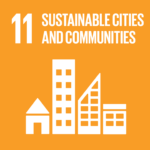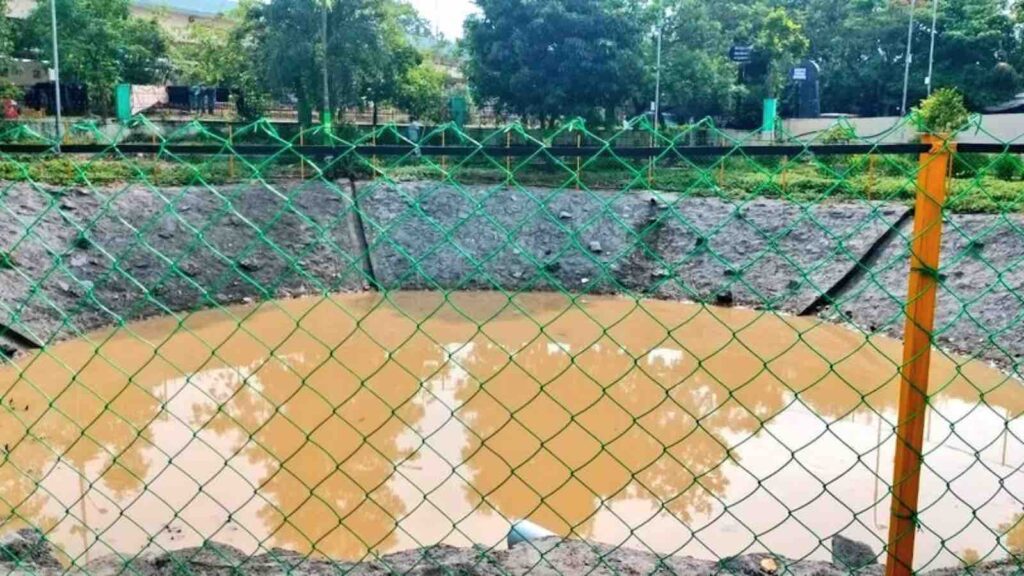The Tamil Nadu government committed Rs 88 crore to building 50 new sponge parks in North Chennai. These additions come on the heels of an earlier batch of 57 sponge parks that were tested under fire—during the aftermath of Cyclone Michaung in early 2023.
CHENNAI — The floodwaters that once defined every monsoon season in Chennai may soon find themselves without a home. In a bold and quiet shift, the Tamil Nadu government is betting Rs 88 crore on a simple idea: let nature do the heavy lifting.
That’s the amount earmarked in the state’s 2025-26 Budget for expanding ‘sponge parks’—a network of engineered green spaces designed not just for beauty, but for survival.
RELEVANT SUSTAINABLE GOALS


As Chennai’s streets routinely buckle under the weight of unrelenting rain, a new solution is taking root—one park, one pond, one pocket forest at a time.
The Rs 88-Crore Bet on Nature
In its latest budget, the Tamil Nadu government committed Rs 88 crore to building 50 new sponge parks in North Chennai. These additions come on the heels of an earlier batch of 57 sponge parks that were tested under fire—during the aftermath of Cyclone Michaung in early 2023.
The verdict? Promising. These parks harvested millions of litres of rainwater and kept water off the streets in places that used to flood first.
Each park is built with an eye toward functionality: pond-like depressions carved into unused lands, drains rerouted to feed rainwater into them, and layered filtration tanks that clean and store the water. They’re not just flood control—they’re water security, biodiversity sanctuaries, and public parks rolled into one.
From Wetland Loss to Wetland Reborn
Urbanisation has not been kind to Chennai. Built-up areas have steamrolled farmlands, forests, and low-lying wetlands. With natural drainage choked, the city’s absorptive capacity plummeted. The result: chronic flooding, water scarcity, and rising urban heat.
But in a twist of urban redemption, one new sponge park has reclaimed a vanishing wetland once part of Porur Lake. Officials describe it as a fully integrated public space—complete with boardwalks, viewing decks, and ecological landscaping. Designed to function like a natural sponge, this park is also a carbon sink and biodiversity haven, supporting over 85 native species, including migratory birds.
It’s not just restoration. It’s urban rewilding.
How a Sponge Park Works
Picture this: At the center of the park lies a tank layered with gravel, sand, and bio-filters. Surrounding it, a series of pond zones collect stormwater diverted from nearby drains. Around those ponds, rain gardens thick with native trees sit atop layers of compost and sand that speed infiltration.
During dry seasons, the area doubles as a public park—open space in a city starved for it. But when the rains come, it transforms into a flood barrier, soaking up and filtering water before it can choke city streets.
No concrete. No artificial flooring. Just blocks that let water seep through and nature reclaim its role in urban planning.
Sponge parks are more than an urban experiment—they’re a strategic response to a city under siege from climate change. Officials say these parks can harvest up to 75 million litres of rainwater. That’s not a statistic; it’s survival.
The city is also restoring 194 water bodies, desilting drains, and strengthening bunds. It’s a systems approach to a systemic problem.
And it’s working. Roads that once flooded are staying dry. Communities that feared every monsoon now have green armor.
Pocket Forests and the Bigger Picture
Beyond sponge parks, Chennai is sprouting 37 Miyazaki-style pocket forests and nurturing 871 urban parks. These dense green pockets absorb rain, slow runoff, and lower local temperatures.
It’s all part of Tamil Nadu’s Green Mission—to push green cover to 33% by 2030.
Together, these initiatives mark a paradigm shift. Chennai isn’t just reacting to climate threats—it’s rebuilding its landscape to resist them. With sponge parks and pocket forests rising where concrete once ruled, the city is proving that the future of urban survival may not lie in steel or asphalt—but in soil, roots, and rain.
Lead image courtesy of Chennai Corporation
You may also be interested in :
India’s Flood Crisis Deepens: Uncovering Groundwater’s Role in the Escalating Disaster




